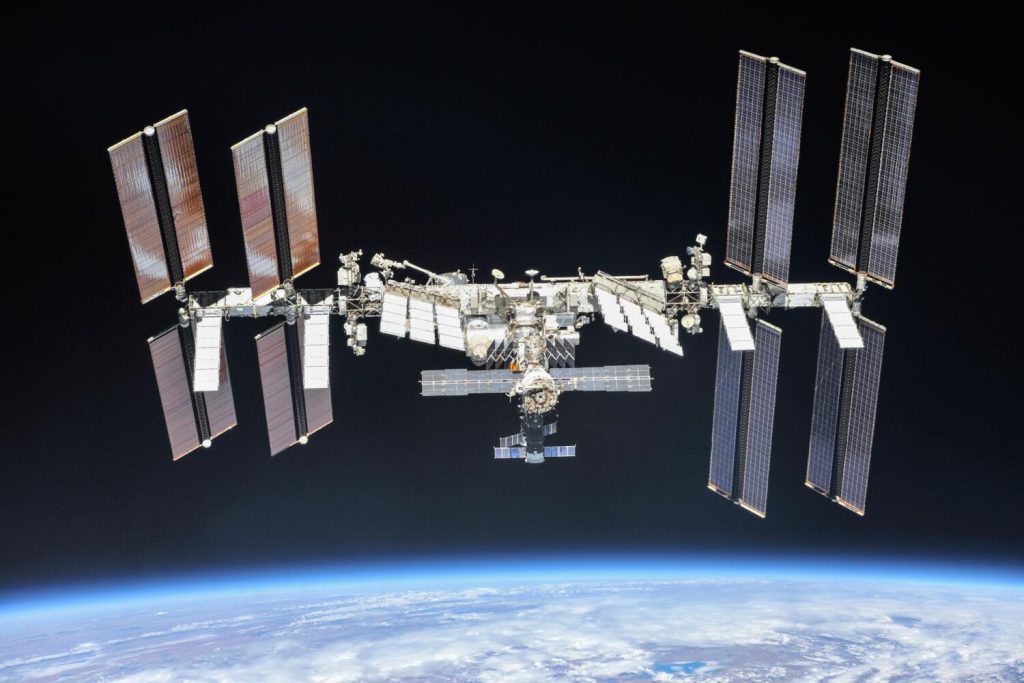At 12:50 p.m. ET today (November 8), NASA and SpaceX monitored the Dragon spacecraft as it successfully demonstrated its ability to reboost the International Space Station, according to an agency press release. Dragon, using its Draco thrusters, boosted the station’s orbit, raising it by 370 feet (113 meters) at its highest point and 3,700 feet (1,128 meters) at its lowest point. The entire maneuver took about 12 minutes and 30 seconds, showcasing Dragon’s ability to reposition the ISS when needed.
This post was updated to include the details about the test; the original article follows.
NASA is preparing for the retirement of the International Space Station (ISS) by figuring out the best way to toss it in the ocean. To that end, the space agency plans to use SpaceX’s Dragon spacecraft for an upcoming orbital maneuver, potentially paving the way for a larger version that will deorbit the space station in six years.
SpaceX and NASA will use the Dragon spacecraft to boost the ISS while docked to the space station, firing its engines for 12.5 minutes to slightly nudge the orbiting laboratory this coming Friday, November 8, NASA officials said during a press conference on Monday, according to Space.com.
The boost will mark a first for Dragon, as it’s never been used for this task before. Typically, Russia’s Soyuz spacecraft have been used to conduct the reboost maneuver while docked to the ISS, but NASA is testing Dragon’s capability to push the space station out of its place as it works to develop a deorbiting vehicle for its eventual retirement.
The ISS is set to retire in 2030, and NASA is putting together a plan to deorbit its beloved space station and send it flying through Earth’s atmosphere where most of it will burn up from the heat of reentry. The space agency, along with its international partners, considered several different options before finally deciding to call on the private industry to design a spacecraft that will drag the space station towards its fiery death.
In March, the space agency released its 2024 budget proposal, which included $180 million for developing a deorbit capability for the ISS. At the time, NASA had estimated its ISS tug would cost around $1 billion in total. NASA had previously suggested using Russia’s Progress cargo spacecraft to deorbit the ISS, but growing tensions with Roscosmos has caused NASA to reconsider. Instead, NASA tasked SpaceX with designing a new deorbit vehicle as part of a $843 million contract.
The deorbit vehicle will be based on Dragon, which transports crew and cargo to the ISS. During a news briefing in July, SpaceX’s director of Dragon mission management, Sarah Walker, noted that the Dragon spacecraft will be outfitted with a new trunk section that can carry additional propellant, as well as engines, avionics, and new ways of power generation specifically fit for the task of deorbiting the space station, Space.com reported at the time.
“The data that we’re going to collect from this reboost and attitude control demonstration will be very helpful … and this data is going to lead to future capability, mainly the U.S deorbit vehicle,” Jared Metter, director of flight reliability at SpaceX, told reporters during the press conference, according to Space.com.
Unlike the Dragon that will be used for Friday’s reboost, the deorbit vehicle will go down with the ship. SpaceX “will develop the deorbit spacecraft, NASA will take ownership after development and operate it throughout its mission,” NASA wrote as part of its contract agreement with SpaceX. “Along with the space station, it is expected to destructively breakup as part of the re-entry process.”
The thrust maneuver has to be strong enough to bring the spacecraft into an elliptical orbit, or an oval-shaped path, so that it’s properly captured by the atmosphere. This will ensure a controlled descent through the atmosphere so that the remaining fragments of the space station end up in a remote area of the Pacific Ocean.
The upcoming test is the first step in planning the careful destruction of the space station, and time for SpaceX to prove that it’s got what it takes.

